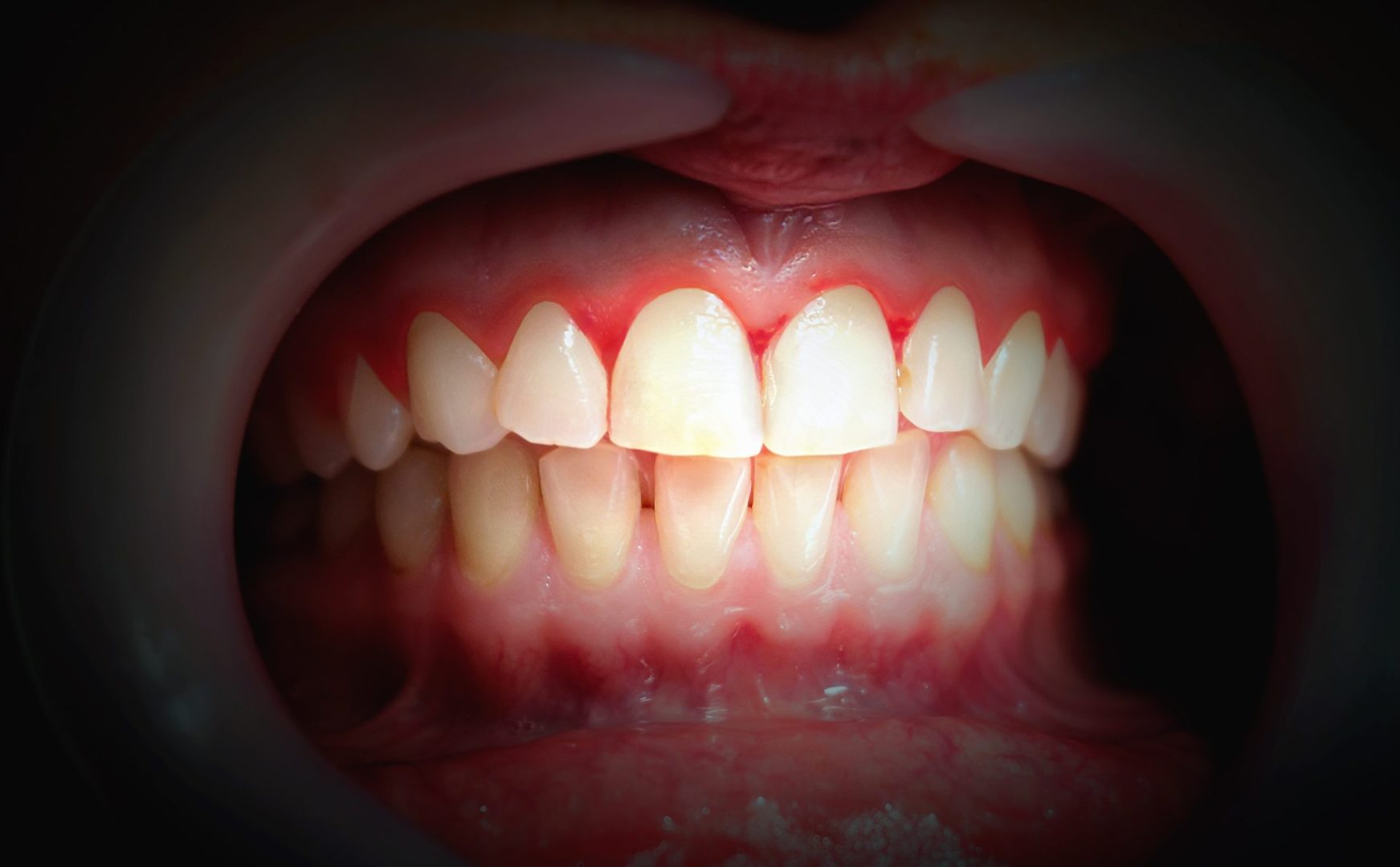Blood in the sink after brushing teeth sends immediate alarm signals through most people’s minds. The sight of pink-tinged saliva or red streaks on dental floss creates instant concern about oral health and potential underlying problems.
Most individuals immediately assume that bleeding gums indicate poor dental hygiene or the early stages of gum disease. While these remain common causes, the reality involves a complex web of potential factors that extend far beyond basic oral care practices.
Understanding the full spectrum of bleeding gum causes empowers people to seek appropriate treatment and address root problems rather than simply managing surface symptoms. This comprehensive knowledge can prevent serious health complications while improving overall well-being.
The complex network of gum health factors
Gum tissue represents one of the most sensitive indicators of overall body health. These delicate tissues respond quickly to changes in immune function, hormone levels, medication effects, and nutritional status throughout the body.
The rich blood supply that keeps gums healthy also makes them vulnerable to systemic conditions that affect circulation, clotting, and tissue integrity. This connection explains why gum bleeding often signals problems extending beyond the mouth itself.
Modern lifestyle factors create multiple stressors on gum health that previous generations rarely encountered. Processed foods, chronic stress, environmental toxins, and medication interactions all contribute to gum sensitivity and bleeding tendencies.
Uncovering the surprising culprits behind persistent bleeding
The assumption that bleeding gums always indicate gingivitis or periodontitis prevents many people from discovering the true causes of their symptoms. This misconception delays appropriate treatment while allowing underlying conditions to progress unchecked.
Many systemic health conditions manifest their first symptoms through oral changes, including gum bleeding. Recognizing these early warning signs enables faster diagnosis and treatment of potentially serious medical conditions.
The interconnected nature of oral and systemic health means that treating bleeding gums often requires addressing multiple factors simultaneously. This comprehensive approach delivers better long-term results than focusing solely on local oral care.
Blood disorders that trigger unexpected gum bleeding
- Platelet dysfunction creates persistent bleeding episodes. When blood cells responsible for clotting fail to function properly, even minor gum irritation results in prolonged bleeding that doesn’t respond to improved oral hygiene.
Low platelet counts, known as thrombocytopenia, can develop from various causes including autoimmune conditions, certain medications, or bone marrow disorders. This condition makes gums bleed easily with minimal provocation.
Bleeding disorders like hemophilia or von Willebrand disease affect the blood’s ability to clot normally. People with these conditions experience gum bleeding that seems disproportionate to the level of gum irritation present.
Hormonal fluctuations that destabilize gum health
- Pregnancy hormones dramatically alter gum sensitivity. The surge in estrogen and progesterone during pregnancy increases blood flow to gums while making them more reactive to bacterial plaque and food particles.
This hormonal influence explains why many women experience bleeding gums for the first time during pregnancy, even with excellent oral hygiene habits. The condition typically improves after delivery as hormone levels normalize.
Menstrual cycles also affect gum health, with some women noticing increased bleeding and sensitivity in the days leading up to their periods. These cyclical changes reflect the ongoing influence of reproductive hormones on oral tissues.
Menopause brings different hormonal challenges that can trigger gum bleeding. Declining estrogen levels affect tissue thickness and healing capacity, making gums more vulnerable to irritation and bleeding.
Nutritional deficiencies that weaken gum integrity
- Vitamin C deficiency undermines collagen production essential for healthy gums. Without adequate vitamin C, the body cannot maintain strong connective tissues that support teeth and prevent gum bleeding.
Modern diets often lack sufficient fresh fruits and vegetables needed to provide optimal vitamin C levels. Even mild deficiencies can manifest as increased gum bleeding and slower healing after dental procedures.
Scurvy, the severe form of vitamin C deficiency, causes dramatic gum bleeding and tooth loss. While rare in developed countries, subclinical deficiencies remain common and contribute to persistent gum problems.
Vitamin K deficiency interferes with proper blood clotting mechanisms throughout the body, including gum tissues. This deficiency can result from poor dietary intake or conditions that affect fat absorption.
Medication side effects that compromise gum health
- Blood-thinning medications increase bleeding tendencies throughout the body, including gum tissues. Anticoagulants like warfarin, heparin, and newer direct oral anticoagulants make gums bleed more easily and for longer periods.
Antiplatelet medications such as aspirin and clopidogrel affect platelet function, reducing the blood’s ability to form clots quickly. This effect extends to gum bleeding that may seem excessive for minor irritation.
Some blood pressure medications cause gum overgrowth that traps bacteria and irritates tissues, leading to bleeding. Calcium channel blockers are particularly associated with this side effect.
Antidepressants and other psychiatric medications can cause dry mouth, which reduces saliva’s protective effects and makes gums more susceptible to irritation and bleeding.
Autoimmune conditions that attack gum tissues
- Lupus and other autoimmune diseases create systemic inflammation that affects gum health. These conditions cause the immune system to attack healthy tissues, including those supporting teeth and gums.
Rheumatoid arthritis increases inflammation throughout the body, including gum tissues. People with this condition often experience more severe gum disease and bleeding compared to those without autoimmune involvement.
Sjögren’s syndrome reduces saliva production, creating dry mouth conditions that make gums more vulnerable to irritation and bleeding. The lack of saliva’s protective effects allows bacteria to flourish and irritate gum tissues.
Inflammatory bowel diseases like Crohn’s disease and ulcerative colitis can cause oral manifestations including gum bleeding and ulcerations. These conditions reflect the systemic inflammatory processes affecting multiple organ systems.
Systemic diseases that compromise circulation
- Diabetes affects blood vessel health throughout the body, including the small vessels that supply gum tissues. Poor blood sugar control increases infection risk and slows healing, making gums more prone to bleeding.
High blood glucose levels create ideal conditions for bacterial growth in the mouth while impairing immune function. This combination makes diabetic individuals more susceptible to gum disease and associated bleeding.
The relationship between diabetes and gum disease works in both directions, with gum infections making blood sugar control more difficult. This creates a cycle where each condition worsens the other.
Heart disease affects circulation and can manifest through gum bleeding and increased susceptibility to oral infections. The connection between heart health and oral health continues to strengthen as research progresses.
Lifestyle factors that silently damage gums
- Chronic stress elevates cortisol levels that suppress immune function and increase inflammation throughout the body, including gum tissues. This makes gums more reactive to irritants and slower to heal from minor injuries.
Sleep deprivation impairs immune function and tissue repair processes, making gums more susceptible to bleeding and infection. Poor sleep quality affects the body’s ability to maintain healthy oral tissues.
Smoking damages blood vessels and reduces oxygen delivery to gum tissues while impairing immune function. These effects make gums more prone to bleeding while masking the severity of underlying gum disease.
Excessive alcohol consumption affects vitamin absorption and liver function, which can impact blood clotting and gum health. Regular heavy drinking increases the risk of gum bleeding and other oral health problems.
Environmental toxins and their oral health impact
Heavy metal exposure from various sources can accumulate in body tissues and affect gum health. Lead, mercury, and other toxic metals interfere with normal cellular function and healing processes.
Environmental pollutants and chemicals in personal care products can trigger inflammatory responses that affect gum tissues. Some individuals develop sensitivities that manifest as chronic gum irritation and bleeding.
Fluoride toxicity from excessive exposure can actually damage gum tissues despite fluoride’s protective effects at appropriate levels. Finding the right balance requires understanding individual exposure sources.
Identifying patterns and seeking solutions
Keeping track of bleeding episodes helps identify patterns related to menstrual cycles, stress levels, medication changes, or dietary factors. This information proves valuable when working with healthcare providers to determine underlying causes.
Noting the timing, severity, and triggers for gum bleeding creates a comprehensive picture that aids in accurate diagnosis. Many people discover unexpected connections between their symptoms and other health factors.
The location and characteristics of gum bleeding can provide clues about underlying causes. Generalized bleeding suggests systemic factors, while localized bleeding may indicate specific irritants or conditions.
Comprehensive approaches to gum bleeding
Addressing bleeding gums often requires a multifaceted approach that considers both oral and systemic health factors. Simple oral hygiene improvements may not resolve bleeding caused by underlying medical conditions.
Working with healthcare providers to identify and treat underlying conditions often resolves gum bleeding more effectively than focusing solely on dental care. This comprehensive approach addresses root causes rather than just symptoms.
Regular health monitoring can detect early signs of conditions that affect gum health. Blood tests, hormone assessments, and nutritional evaluations provide valuable information for preventing and treating bleeding gums.
Prevention strategies that address root causes
Maintaining optimal nutrition supports gum health through adequate vitamin and mineral intake. Focus on whole foods rich in vitamin C, vitamin K, and other nutrients essential for tissue health and blood clotting.
Stress management techniques help regulate cortisol levels and support immune function that protects gum health. Regular exercise, meditation, and adequate sleep all contribute to better oral health outcomes.
Avoiding known triggers like excessive alcohol, tobacco, and unnecessary medications reduces stress on gum tissues. Making informed lifestyle choices supports overall health while protecting oral tissues.
When to seek professional evaluation
Persistent gum bleeding that doesn’t improve with better oral hygiene requires professional evaluation to rule out underlying medical conditions. Early intervention prevents complications while addressing root causes.
Sudden onset of severe gum bleeding may indicate serious underlying conditions requiring immediate medical attention. These symptoms shouldn’t be ignored or attributed solely to dental problems.
Changes in bleeding patterns, such as increased frequency or severity, warrant professional assessment even if previous evaluations were normal. Health conditions can develop or change over time.
Building long-term gum health
Understanding the multiple factors that influence gum health empowers people to make informed decisions about their oral and overall health care. This knowledge prevents unnecessary suffering while promoting better outcomes.
Regular monitoring of both oral and systemic health helps identify potential problems before they become severe. Preventive approaches cost less and cause fewer complications than treating advanced conditions.
The connection between oral and systemic health continues to strengthen as research advances. Staying informed about these connections helps people maintain better health throughout their lives.











